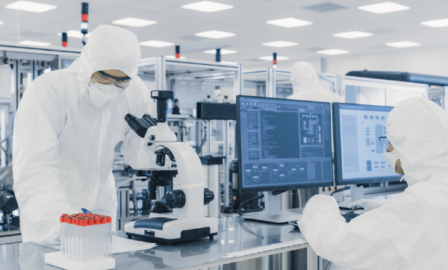Taking a Look at the Impact of 5G in Healthcare
It’s clear that the world is continuing to digitize after the COVID-19 pandemic. More transactions and elements of daily life are expected to follow the virtual switch that has already been pioneered by so many companies. The latest generation of wireless networks to support that switch is called 5G. Boasting significantly faster data rates, a 100x increase in traffic capacity and network efficiency, and a 10x decrease in lag between communications from 4G, this new network is a technological game changer. Consumers expect healthcare providers to be effective, fast, and secure, and the introduction of 5G has the industry poised to transform. Below, we outline three specific areas that will see rapid developments surrounding the impact of 5G in healthcare.
The Expansion of Telehealth
While telehealth is nothing new, it has certainly been discredited by lag, connection cut outs, and long delays between communications called “low latency.” Now, healthcare providers have the potential to effectively eliminate any issues with poor connectivity. 5G allows for the healthcare industry to capitalize on a consumer market that has grown accustomed to virtual meetings. The telemedicine market is expected to grow at a CAGR of 16.5% between 2017 and 2023.
Furthermore, in a post-COVID era of health conscientiousness, at-risk or chronically ill consumers may jump at the chance to minimize contact at a healthcare provider’s facility. In a similarly attractive manner, pharmaceutical companies can conduct phases of clinical trials remotely with patients who remain at home.
The rise of telehealth is significant for pharmaceutical companies who can also now use direct-to-consumer channels to increase patient treatment adherence. For example, a company can provide on-demand medication instructions and alerts to consumers to improve patient outcomes and increase product success rates. Prescribers and pharmaceutical companies can also use 5G to communicate regardless of distance. A specialized doctor in New York could share and receive information with a company headquartered in Seattle.
5G allows the healthcare and pharmaceutical industries to follow the virtual meeting conversion while continuing to provide expected levels of service.
Medical Technology
Machine learning with AI is making advancements in all sectors of the healthcare industry. Machine learning is a segment of AI that allows machines to advance without necessarily being programmed. A great example of its use is for individuals with disabilities. An individual who is visually impaired can wear smart glasses that continuously learn how to recognize certain objects, potential hazards, and faces in the user’s life.
Another use for machine learning might be a computer system that learns to recognize trends within clinical trial data with increasing accuracy. The advent of 5G allows for these machine learning devices to digest more data at faster rates, transmit between other IoT devices with lower latency, and preserve battery life when mobile. Essentially, they can do more in less time with fewer resources. This is important in an industry where more reliable data connections can be the difference between success and failure.
Virtual reality is another exciting new technology across the healthcare industry. Robotic surgery through virtual reality has been available for years, but the same aforementioned fears of lag or glitches in such delicate processes have been omnipresent. 5G, of course, does help to alleviate network connectivity issues or latency between the remote surgeon’s hand and the robotic arm, but it opens the door to even more than that. Medical students across the world can wear virtual reality headsets and watch real time surgeries through the eyes of the surgeon.
Distance between operating room and specialist are now non-factors in a patient’s race to receive medical attention. One report expects VR in the healthcare market to reach $2.4 billion by 2026 and 5G will be with it every step of the way.
5G in Healthcare Data
Hospitals and clinics are filled with a hierarchy of IoT devices and interconnected software–wearables on patients, bedside sensors and monitors, patient data systems, electronic information exchanges, and others. 5G offers an up to 10 Gbps data transfer rate, which is a 10-100x increase over the current 4G LTE speeds.
On top of that, 5G is expected to support up to 1 million connected devices per square kilometer compared to only 2000 with 4G. This means that healthcare providers will be able to process data faster and support more IoT devices than ever before. This is especially important for the pharma industry because R&D will have an instantaneous connection to larger sums of data which can be shared both externally with providers and internally between divisions.
But speed and reliability are unimportant if system data is not secured. One of the largest pitfalls of 5G capability is that as more IoT and mobile devices connect, there’s a larger chance of a security breach. While IoT devices are inherently vulnerable to attacks, 5G does have more advanced protections to combat the issue. The network has a more robust encryption algorithm that discourages cyberattacks and has virtual hardware which reroutes data in case of an attack.
The importance of integrating 5G capabilities for system data, physical IoT devices, and client services is becoming more apparent post COVID-19. Healthcare providers and pharmaceutical companies need strategy experts that are experienced with technology implementation and have focused expertise within the industry to truly capitalize on the advantages of 5G in healthcare.
Subscribe to Clarkston's Insights
Contributions from Jake Park-Walters



